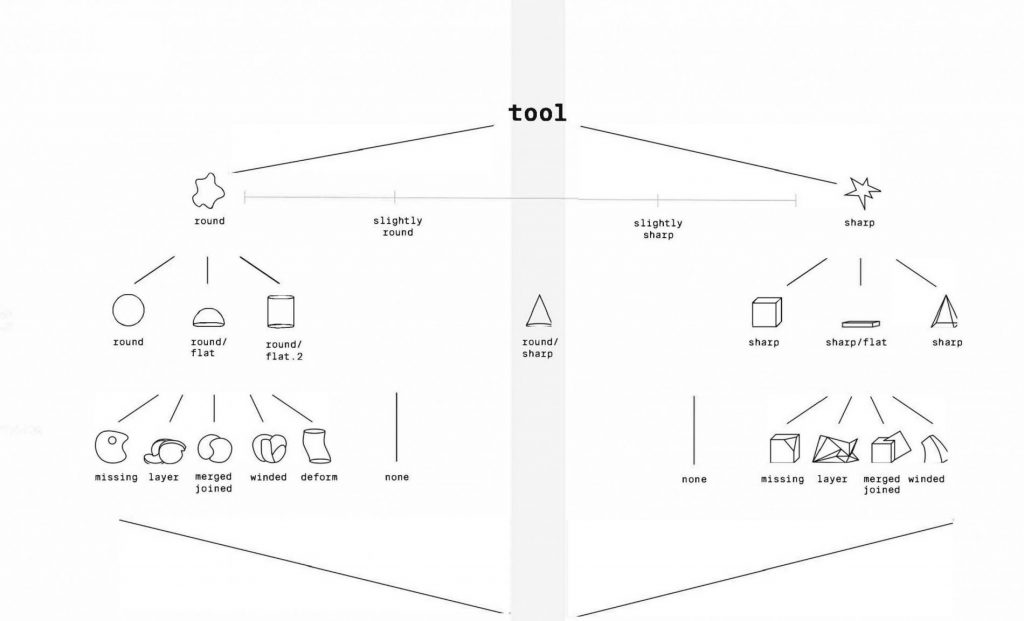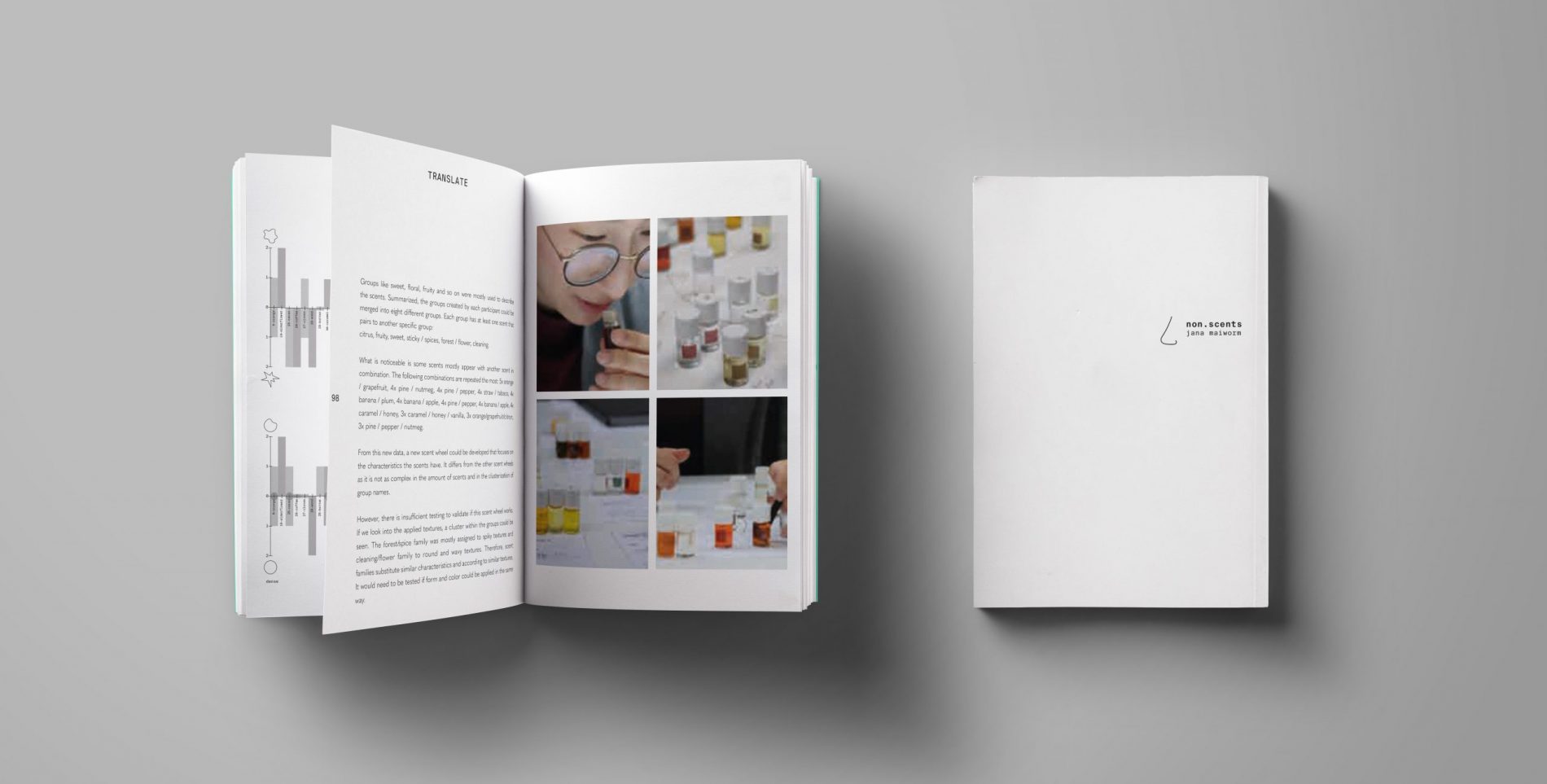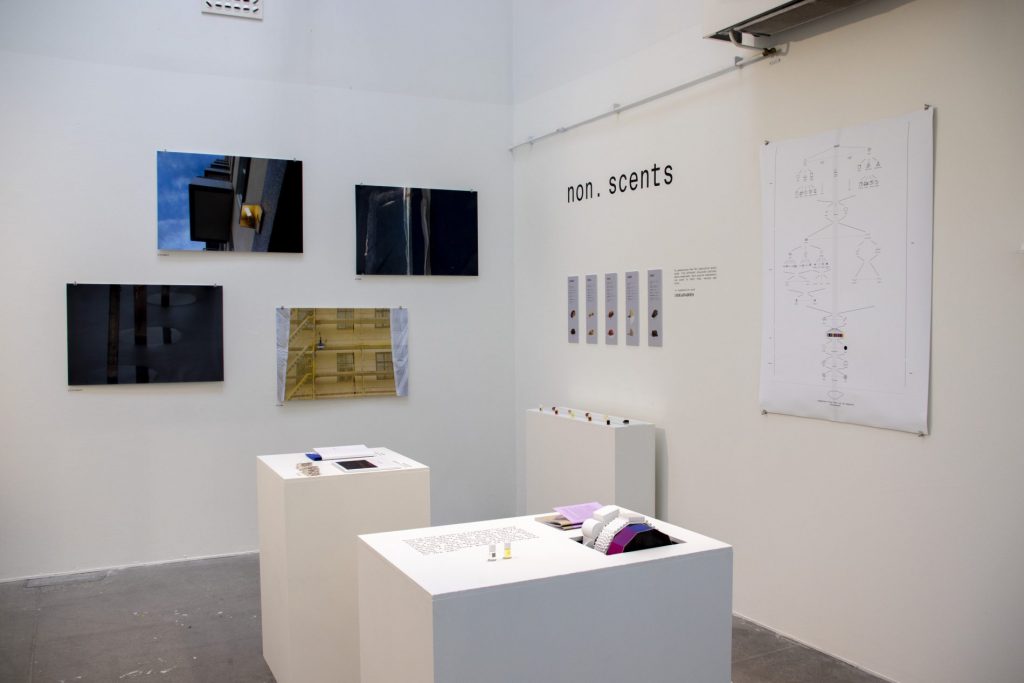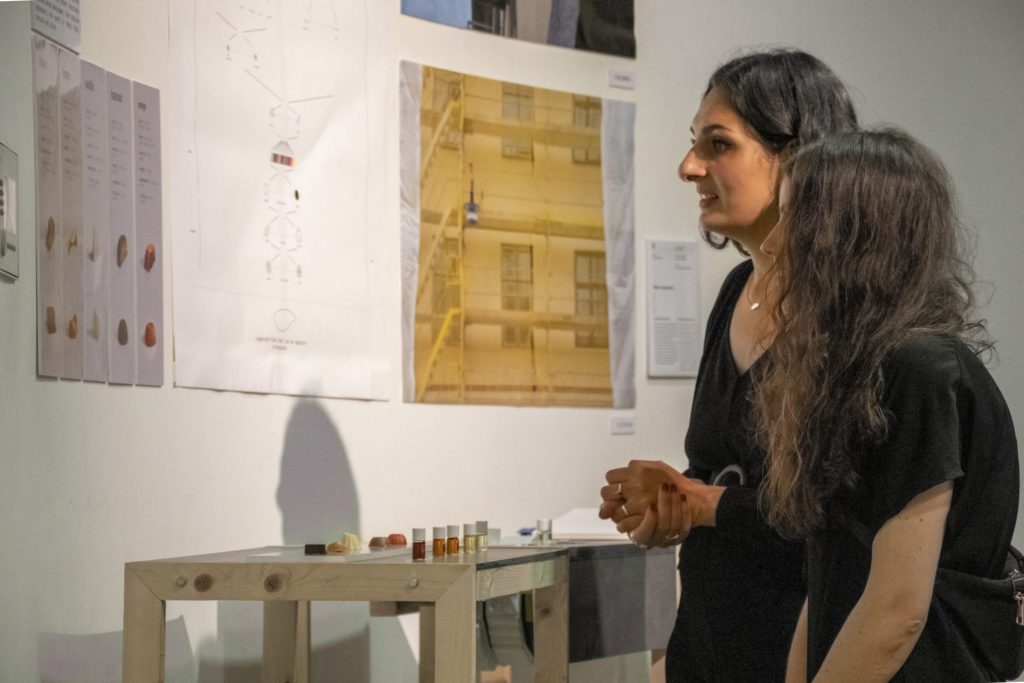NON.SCENTS
The environment we live in is multi-sensory: Everything we do entails the interaction of multiple senses inputs. The experience of scents states the cooperation between senses. Odours are responsible for creating taste, social interaction, creating memories …
However detecting a scent involves other senses to describe sour or sweet (taste), strong or weak (touch) or refer to objects from which odours emanate. Limited vocabulary and the lack of opportunities is leaving us with difficulties to express an odour.
Concerning this – the project explores new possibilities to translate scents by using other senses such as touch and sight.

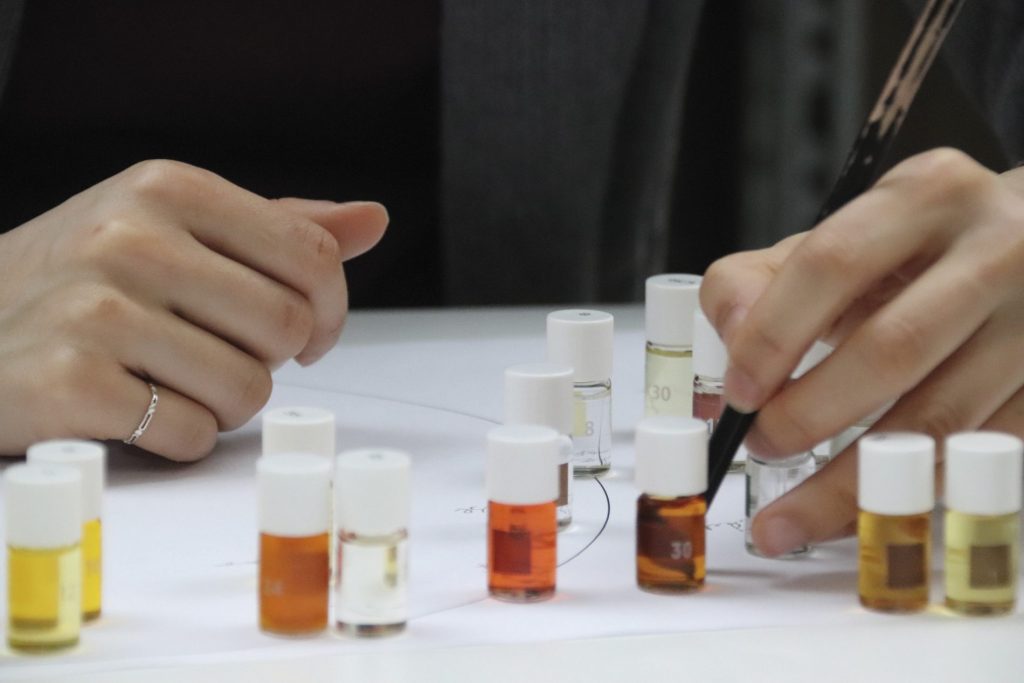

Experiments and workshops
Through six workshops I discovered related associations with selected scents and how we experience them through other channels. All scents were based in chocolate. Throughout the process, a guide was developed that translates scents into other sensorial information. This translation guide could be used to start design processes in a new way and to include more senses/smell.


Application
The tool gave the necessary elements to accurately determine form, texture and color to an applied concept. These traits were then translated into sketches and ideas for how this information could be implemented. Lastly, the sketches were built and explored in an 3D program or clay.
Starting with seven of the chocolate scents, the process explained above was applied to each chocolate. This exploration is supported by a local chocolaterie “Chokladfabriken” in Stockholm. It was important to see if this could be applied in a real context, hence the desire to work with the chocolaterie. The pralines needed to be simplified in their form as they only had limited possibilities in making the molds.
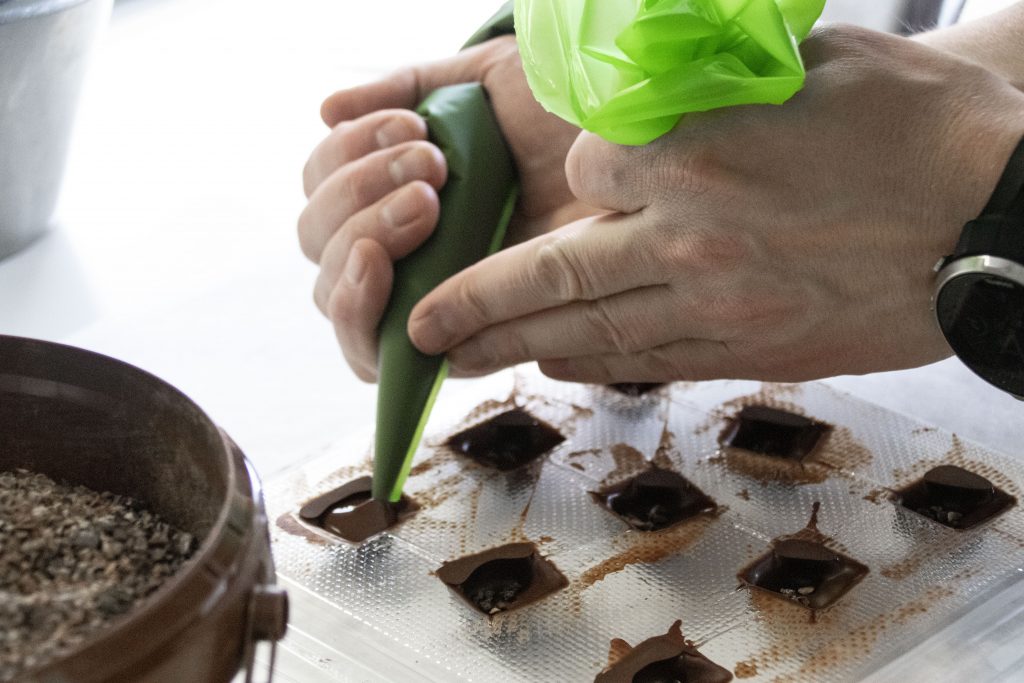
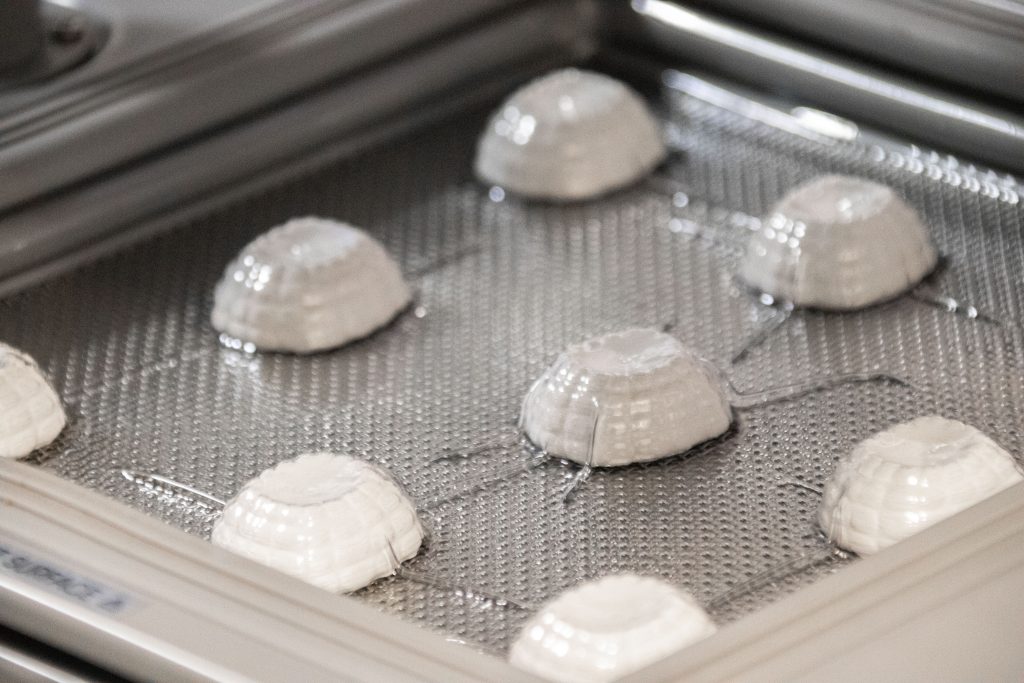
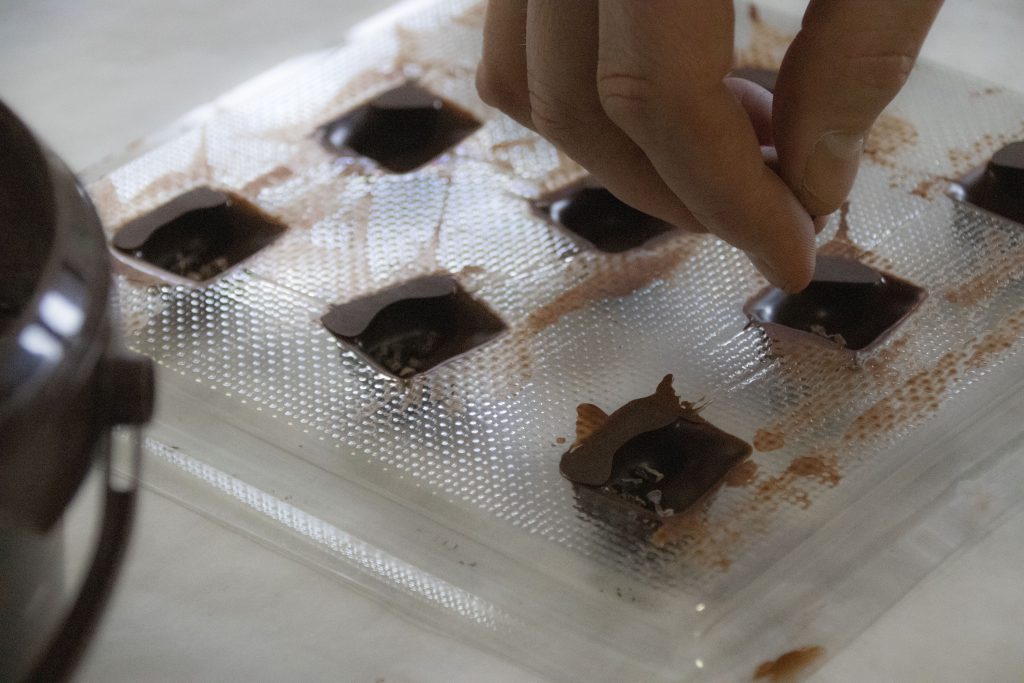
Outcome
Every praline will present one scent and their characteristics at the end. The eye will catch the color, shape and texture. Followed by the hands that will experience the surface, the weight and temperature. Ending by feeling texture and temperature with our lips, followed by the experience of taste.
As most pralines are made with a chocolate shell, the characteristics of density and texture take place inside of the praline. Therefore, the importance of color, shape and texture raised, as the inner texture is only experienced in/at the mouth.
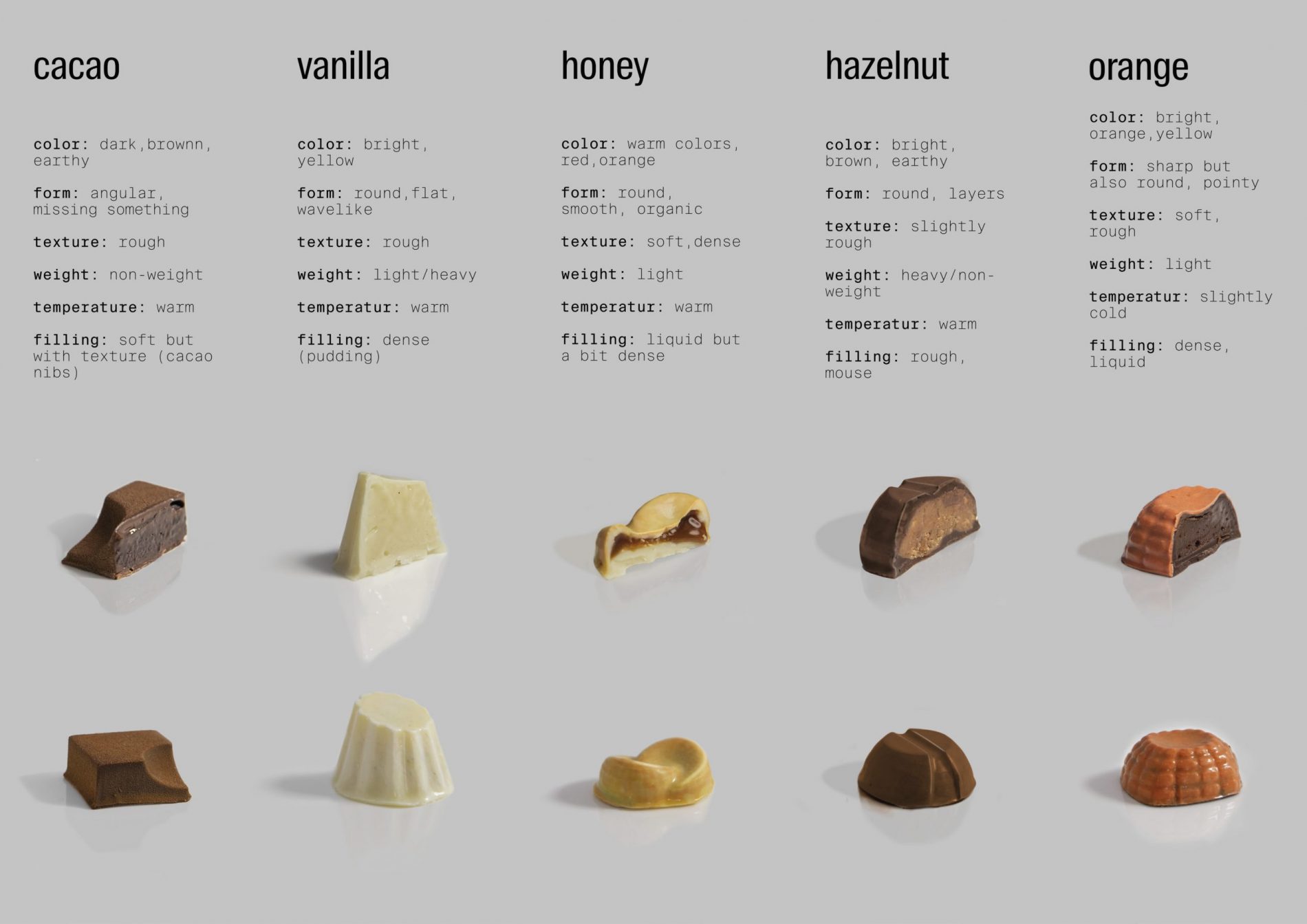
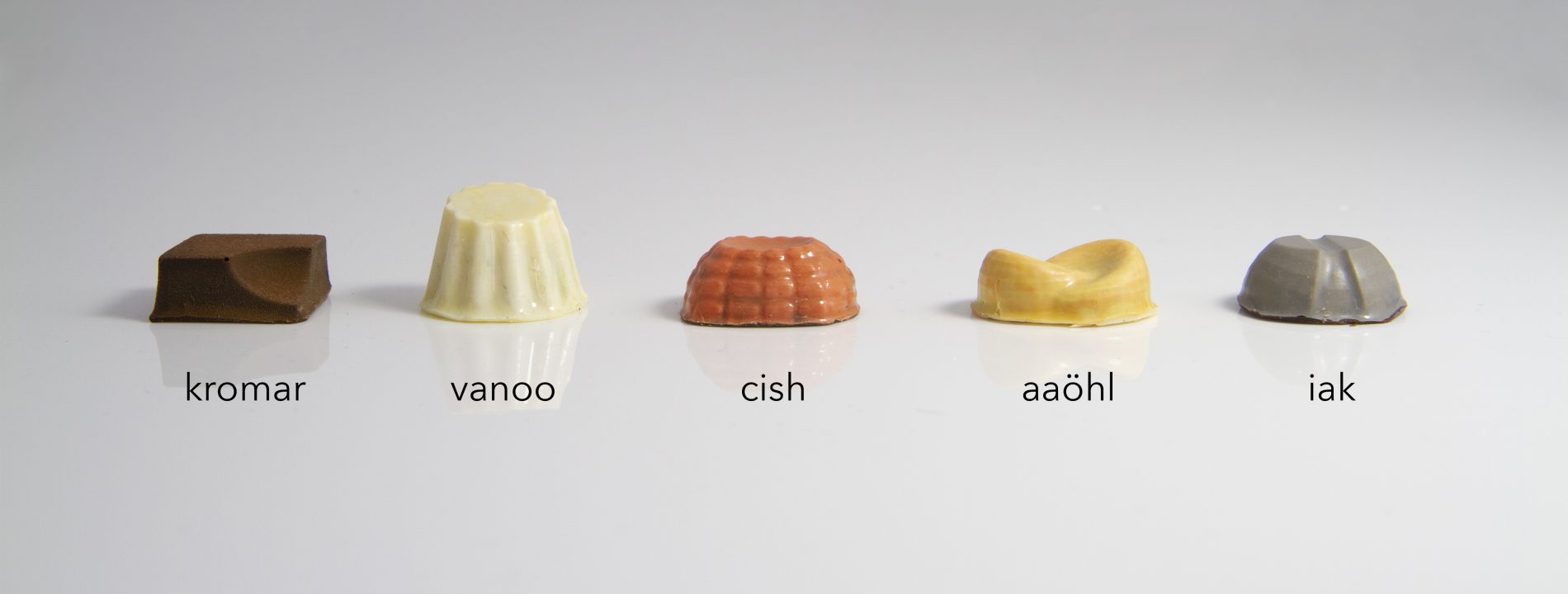
Publication
In the course of this work, a scientific paper was produced, based on the findings and results of the workshops and other studies.
